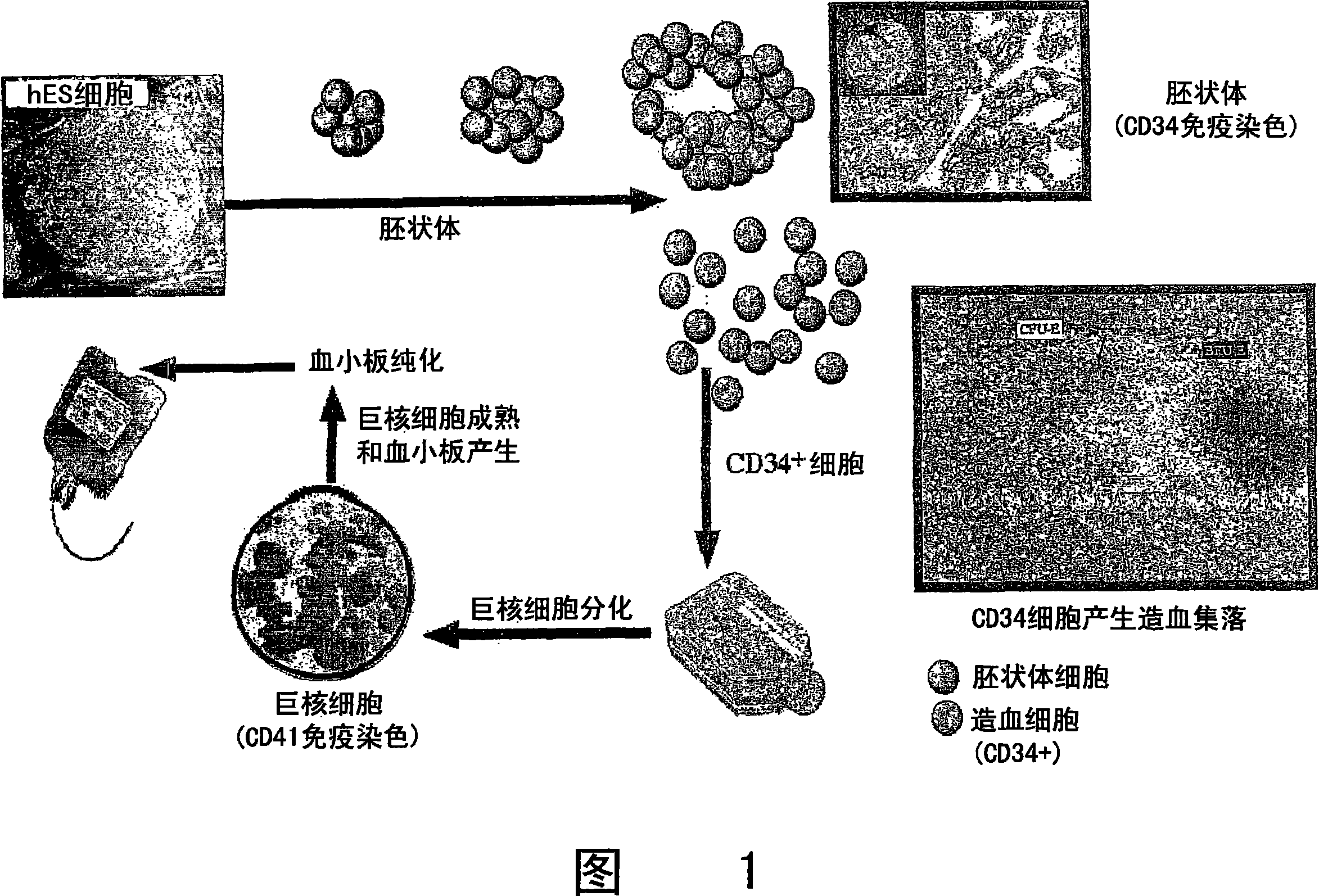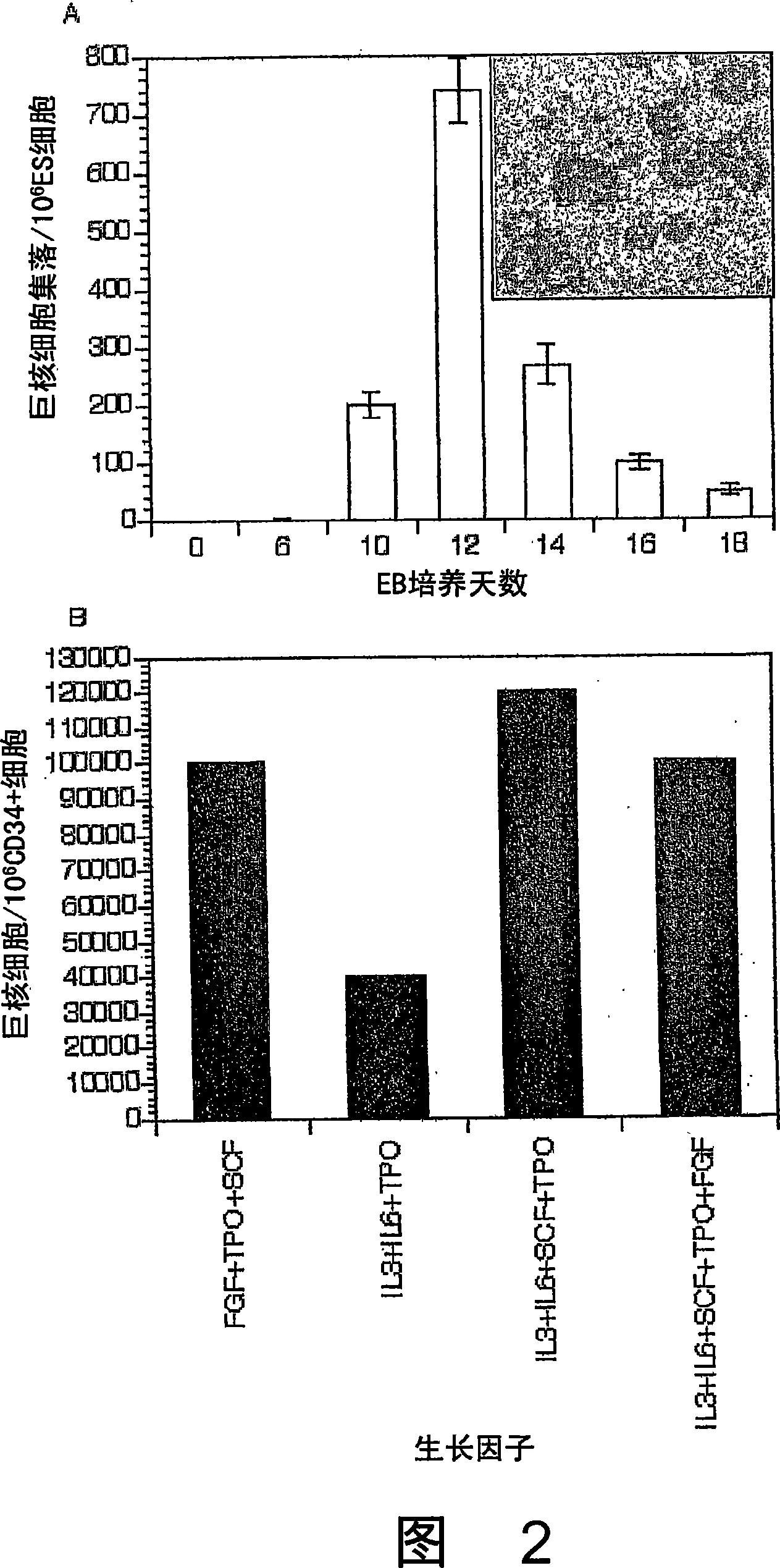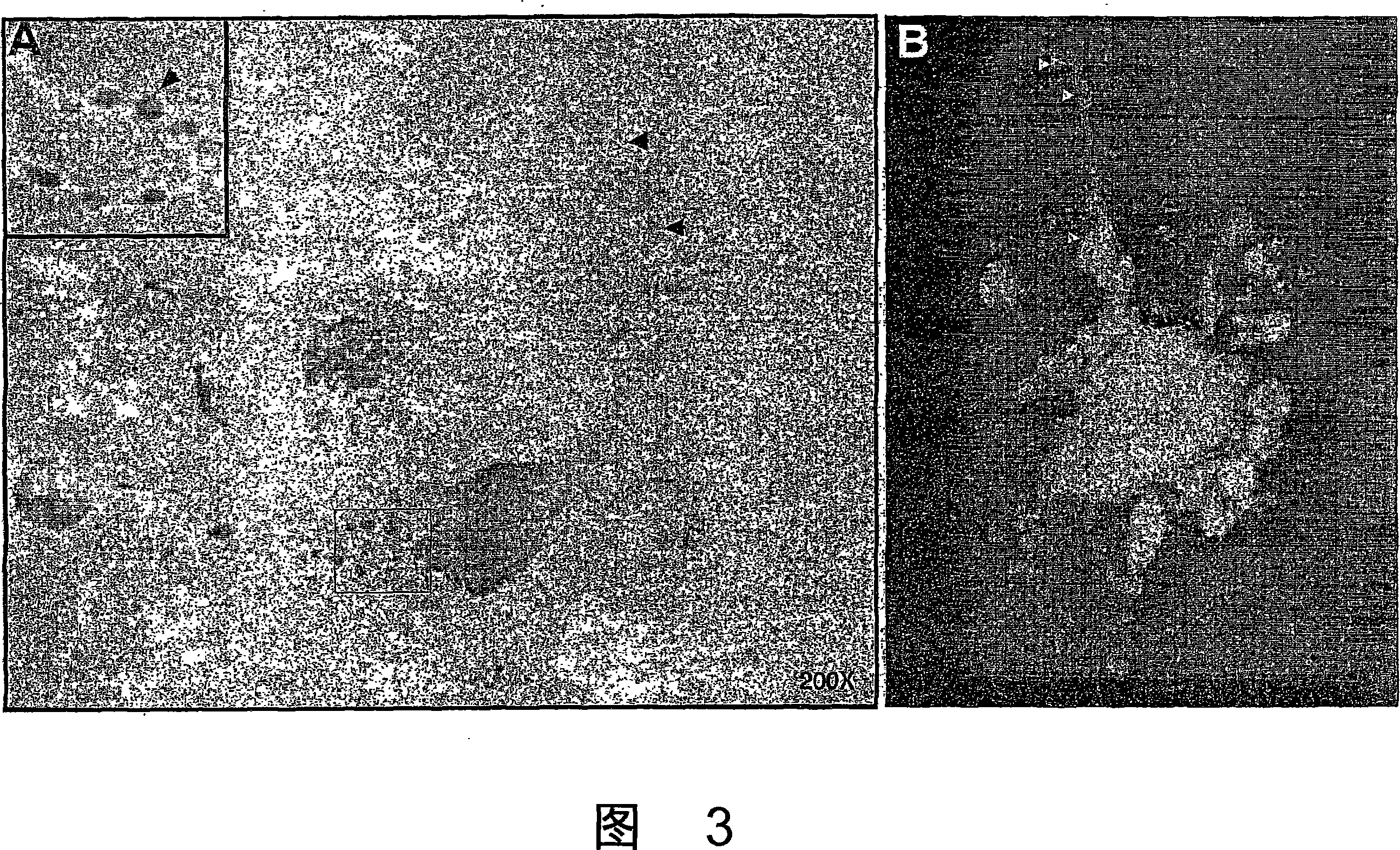Platelets from stem cells
A technology for platelets and human embryonic stem cells, applied in the field of platelets derived from stem cells, can solve problems such as insufficient proof
- Summary
- Abstract
- Description
- Claims
- Application Information
AI Technical Summary
Problems solved by technology
Method used
Image
Examples
Embodiment
[0027] hematopoietic precursor cells of embryoid bodies
[0028] Embryoid body (EB) formation is a method used to study the hematopoietic differentiation of mouse and human ES cells. However, unlike mouse ES cells, single cell suspensions of human ES cells do not form embryoid bodies efficiently. However, for embryoid body formation from human ES cells, intact colonies of human ES cells cultured on mouse embryonic fibroblasts (MEFs) were digested with 0.5 mg / ml dispase for 5 minutes to form small cell colonies. These cell colonies were then further agglutinated in serum-containing stem cell medium (20% FCS). Embryoid bodies began to form after 6 days of incubation of readily distinguishable cell clumps with single cells that did not participate in the formation of cell clumps but apoptotic. After 12 days of culture, the embryoid bodies assembled into early yolk sac embryo structures. Sections of the embryoid bodies were made and subsequently immunolabeled with CD34 antibody...
PUM
 Login to View More
Login to View More Abstract
Description
Claims
Application Information
 Login to View More
Login to View More - R&D
- Intellectual Property
- Life Sciences
- Materials
- Tech Scout
- Unparalleled Data Quality
- Higher Quality Content
- 60% Fewer Hallucinations
Browse by: Latest US Patents, China's latest patents, Technical Efficacy Thesaurus, Application Domain, Technology Topic, Popular Technical Reports.
© 2025 PatSnap. All rights reserved.Legal|Privacy policy|Modern Slavery Act Transparency Statement|Sitemap|About US| Contact US: help@patsnap.com



